Concrete Palimpsest
mixed media
200 x 230 x 172 cm
2012

In the action at LEME gallery on December 16th, 2011, the empty space at 88 Agostinho Cantú Street is treated as history. The concrete cube has nothing exposed in it i and the memory of all the shows accomplished there mournfully echoes in each shake of the piling machine of the next door building - the main reason of the forcible departure from that place.
In this cold and hard space, reality is [un]folded into two, past and present coexist simultaneously as in a “miscalculation” of the architect, a spacial and temporal parallax.
In a process of transition from one place to another, many are the resemblances between the artist andthe archeologist’s work. Collecting, classifying and reordering the world according to new patterns, are their task, just like the immersion and the understanding of the past culture and of all of its symbols and signs.
In this cold and hard space, reality is [un]folded into two, past and present coexist simultaneously as in a “miscalculation” of the architect, a spacial and temporal parallax.
In a process of transition from one place to another, many are the resemblances between the artist andthe archeologist’s work. Collecting, classifying and reordering the world according to new patterns, are their task, just like the immersion and the understanding of the past culture and of all of its symbols and signs.
The Gallery about to be destroyed became my Lascaux’s Cavern, where I take off the “historic” layers shaped on the ground, as a palimpsest of the art’s system and analyze them as “scientifically” as an archeologist would. There is in this action a subliminal conflict tbetween the action of the artist and the aura of the author/architect . There is alsothe pronounced presence of the art market - personified in the concrete hardness of the gallery walls and floor. I face a real struggle against the place, digging the hard soil with an hydraulic hammer hoping to collect traces of art forms once exposed there.
The result of this action is after presented in the new space - simulacrum of the previous one just a few meters from its original place - the excavation appears in the newly built gallery continuing the historical/artistic cycle that happens e will keep happening in that place.
More than an action/documentation about such an affective and familiar space to me as the gallery at Agostinho Cantú Street, this work is a declaration of the respect and belief in the atemporal power of Art and in the changes we experience when subjected to it.
The result of this action is after presented in the new space - simulacrum of the previous one just a few meters from its original place - the excavation appears in the newly built gallery continuing the historical/artistic cycle that happens e will keep happening in that place.
More than an action/documentation about such an affective and familiar space to me as the gallery at Agostinho Cantú Street, this work is a declaration of the respect and belief in the atemporal power of Art and in the changes we experience when subjected to it.
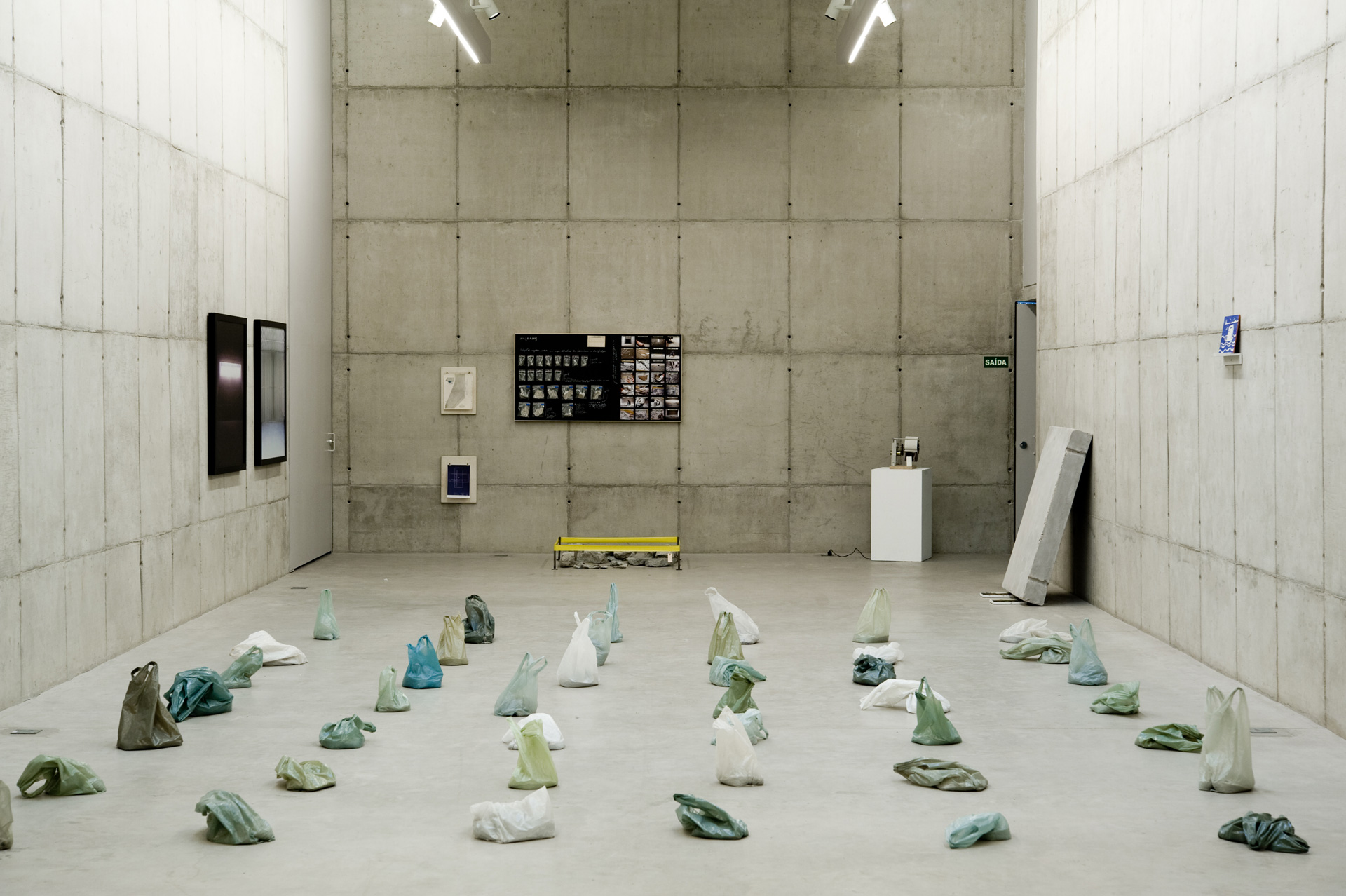
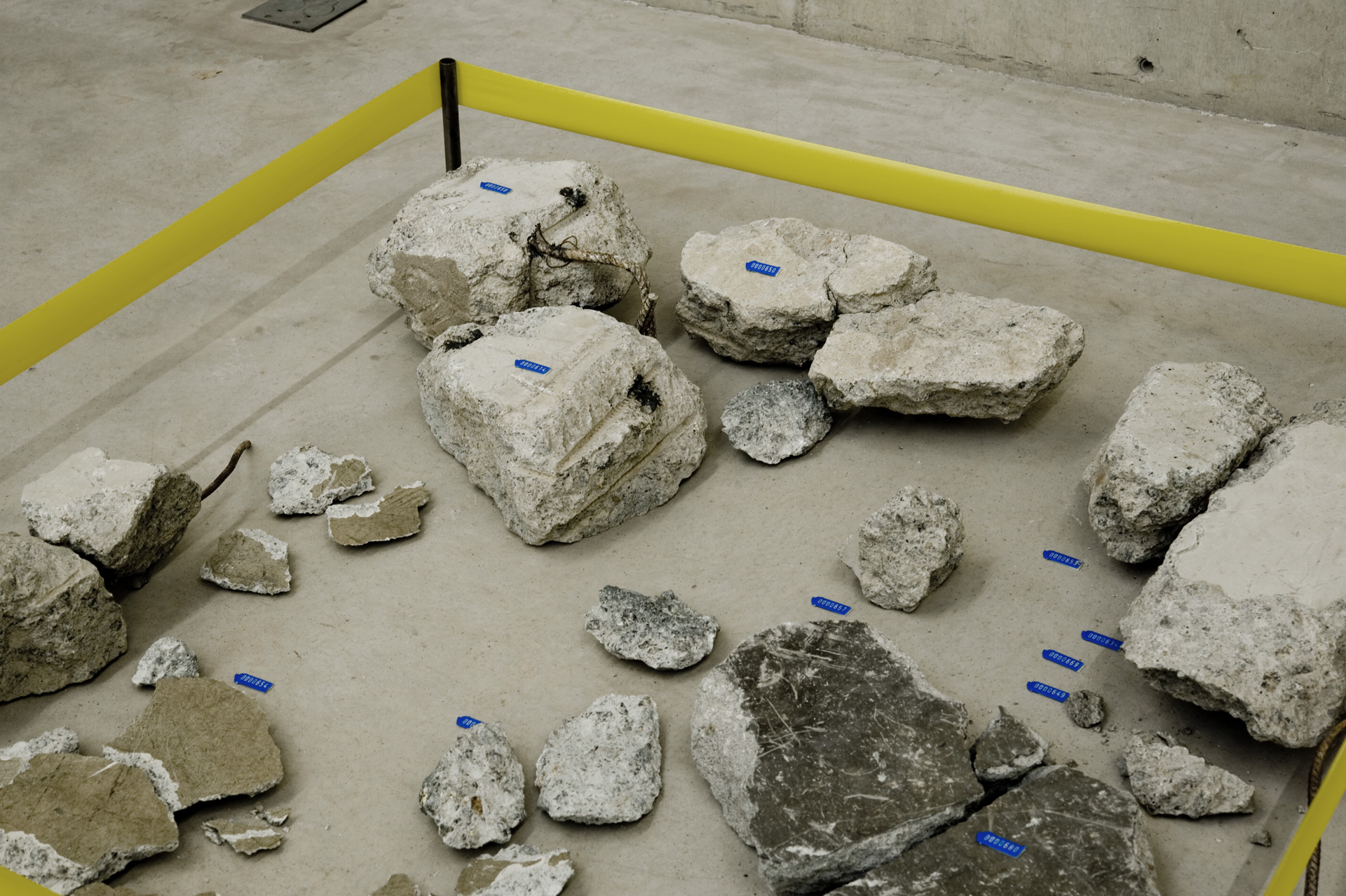
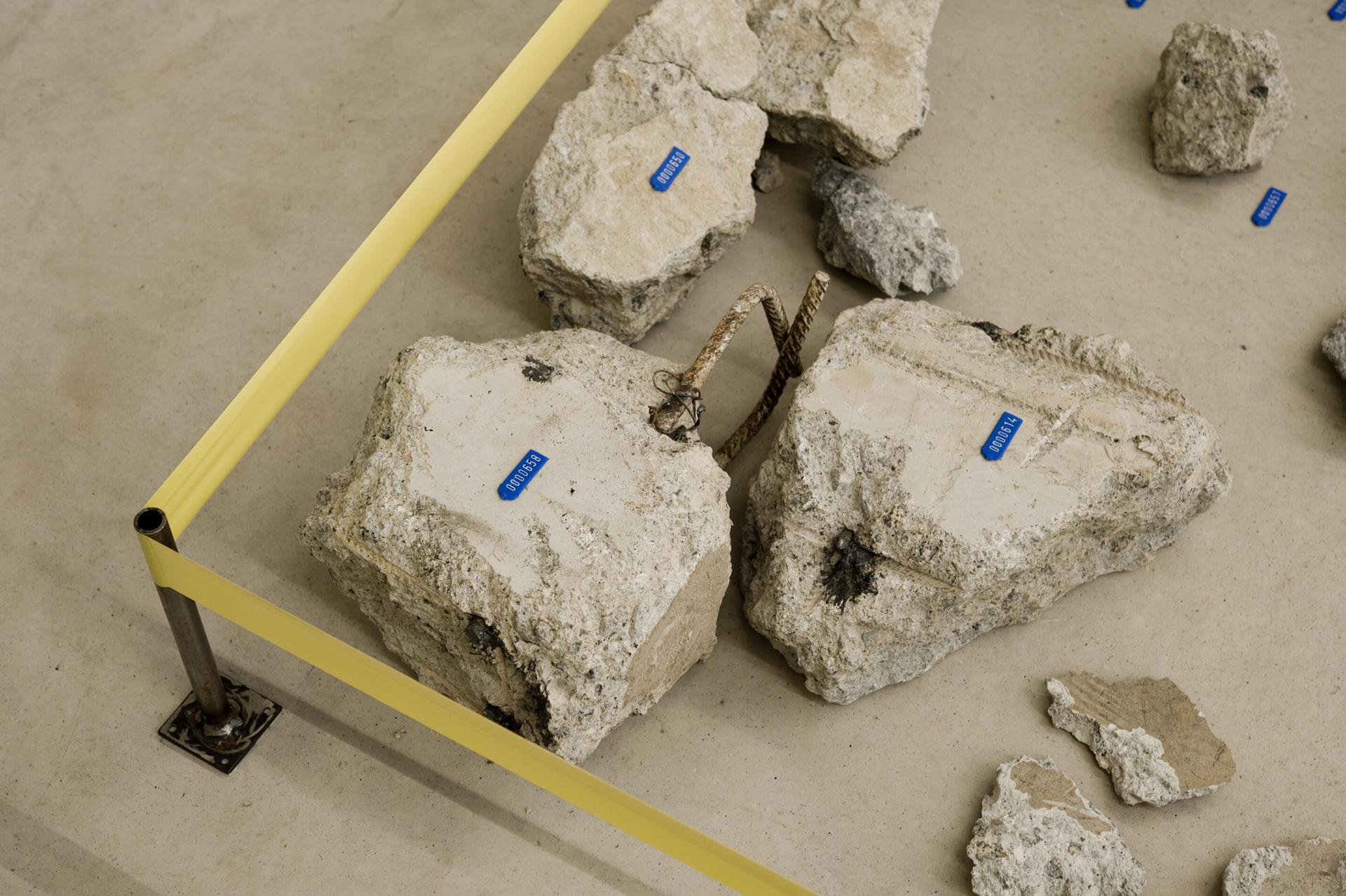



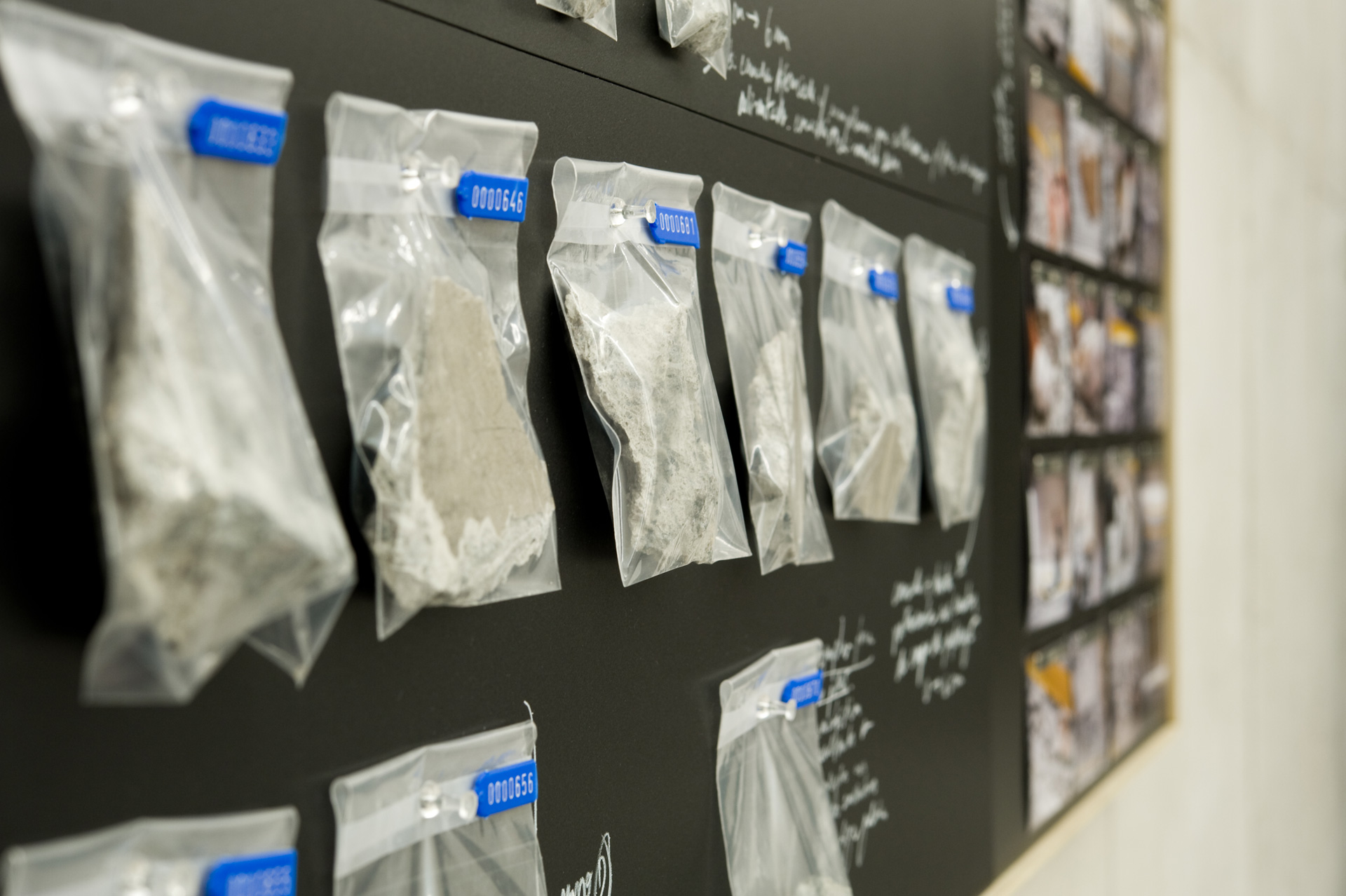
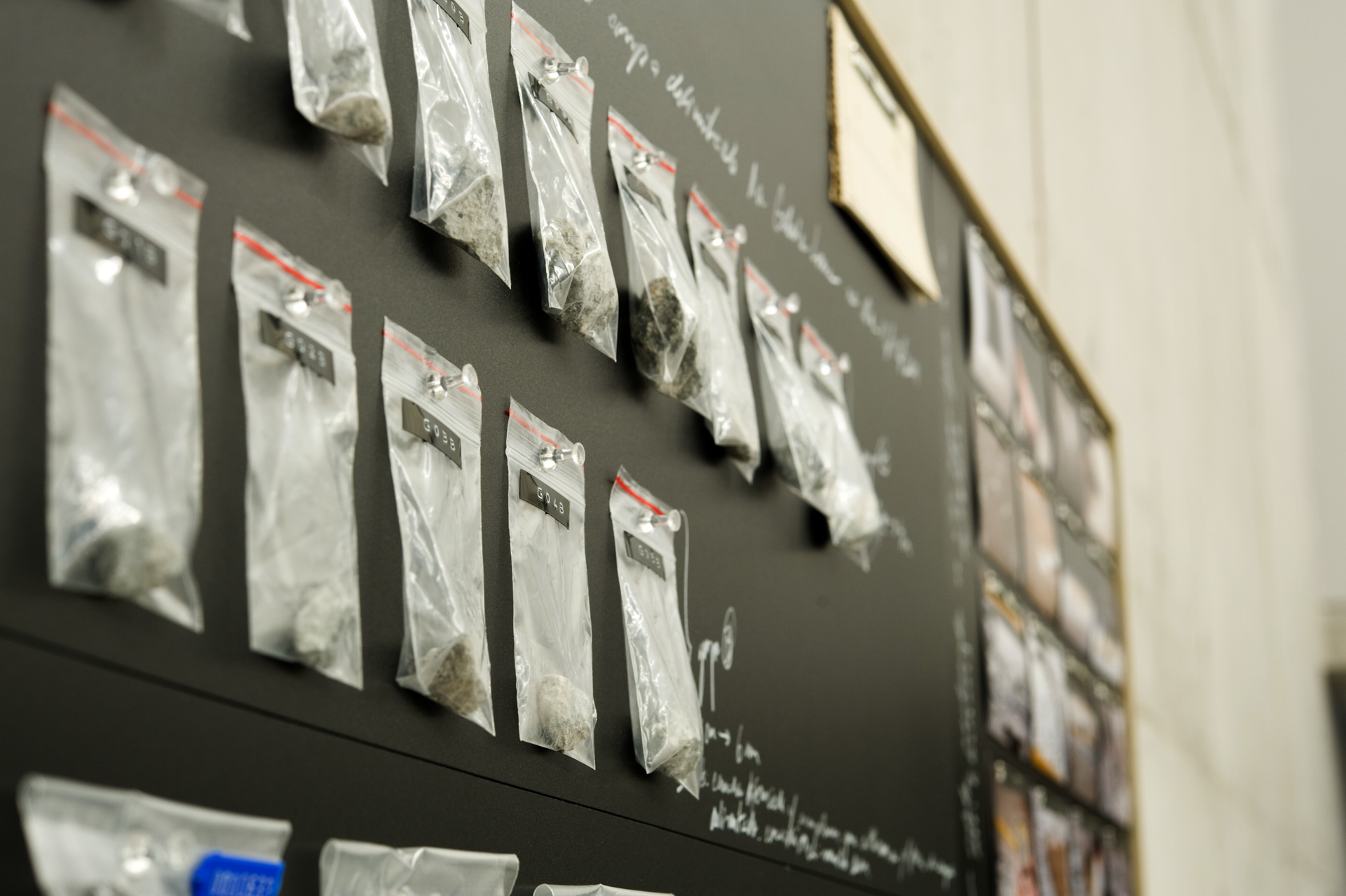

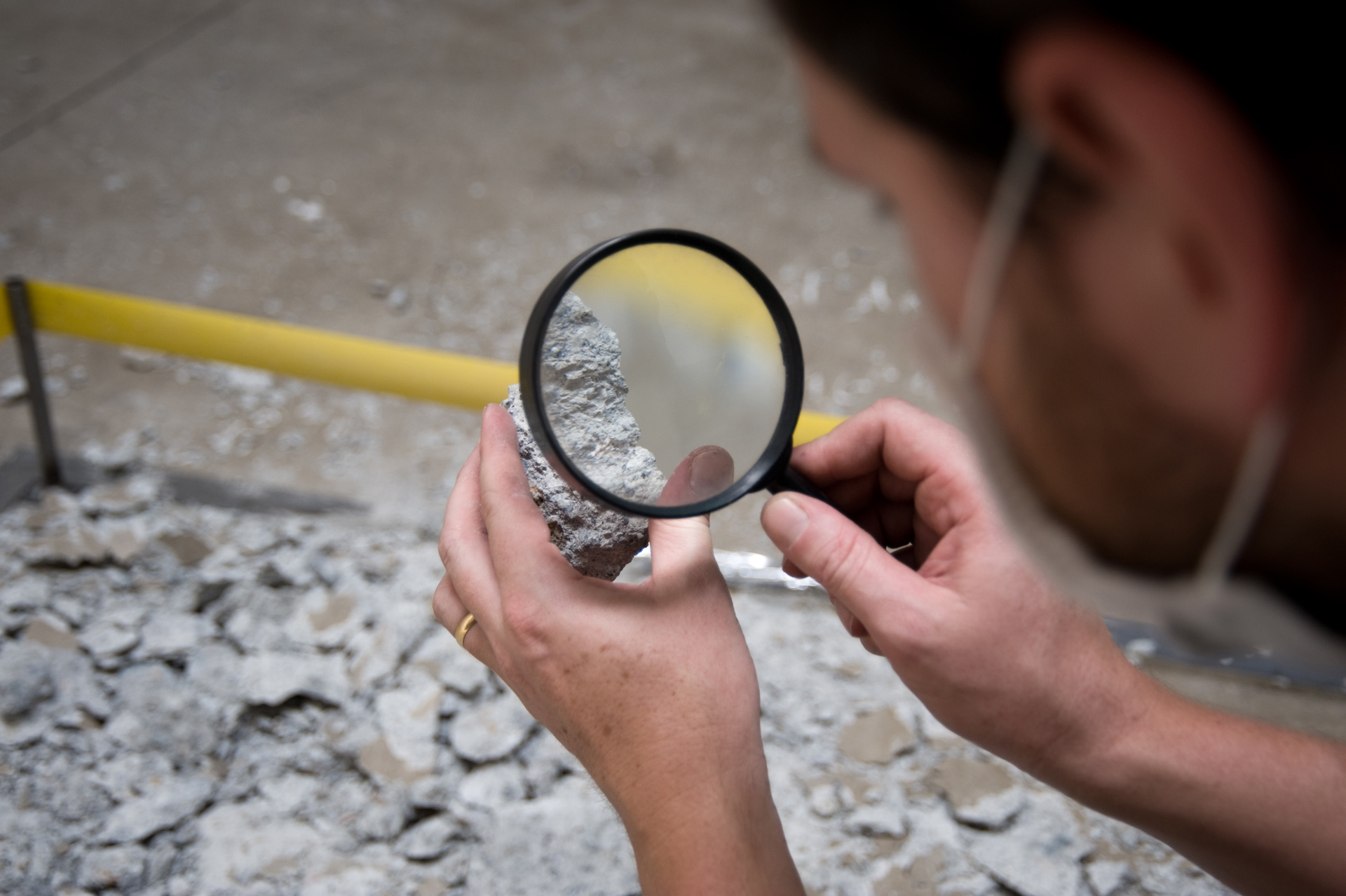
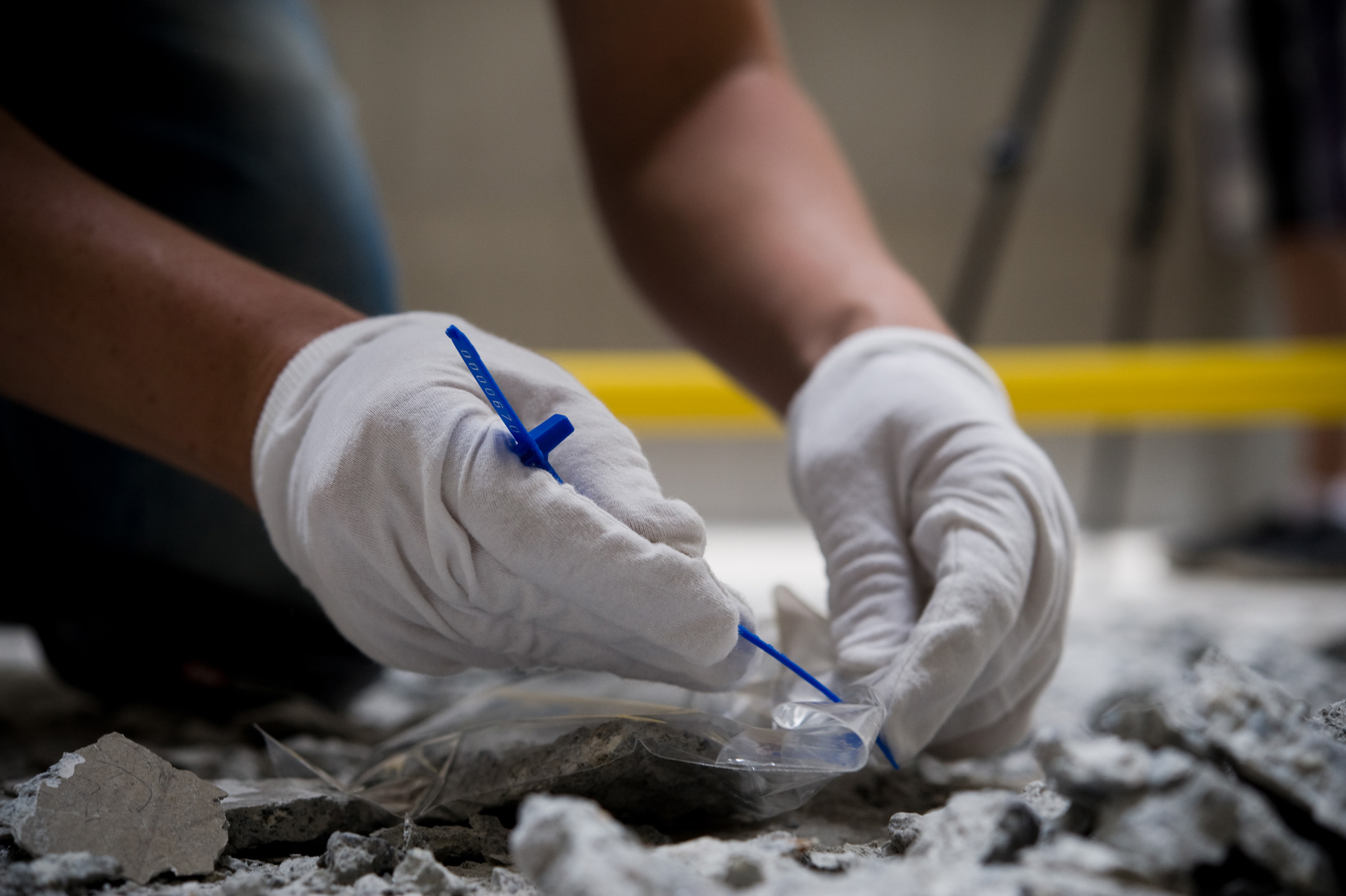
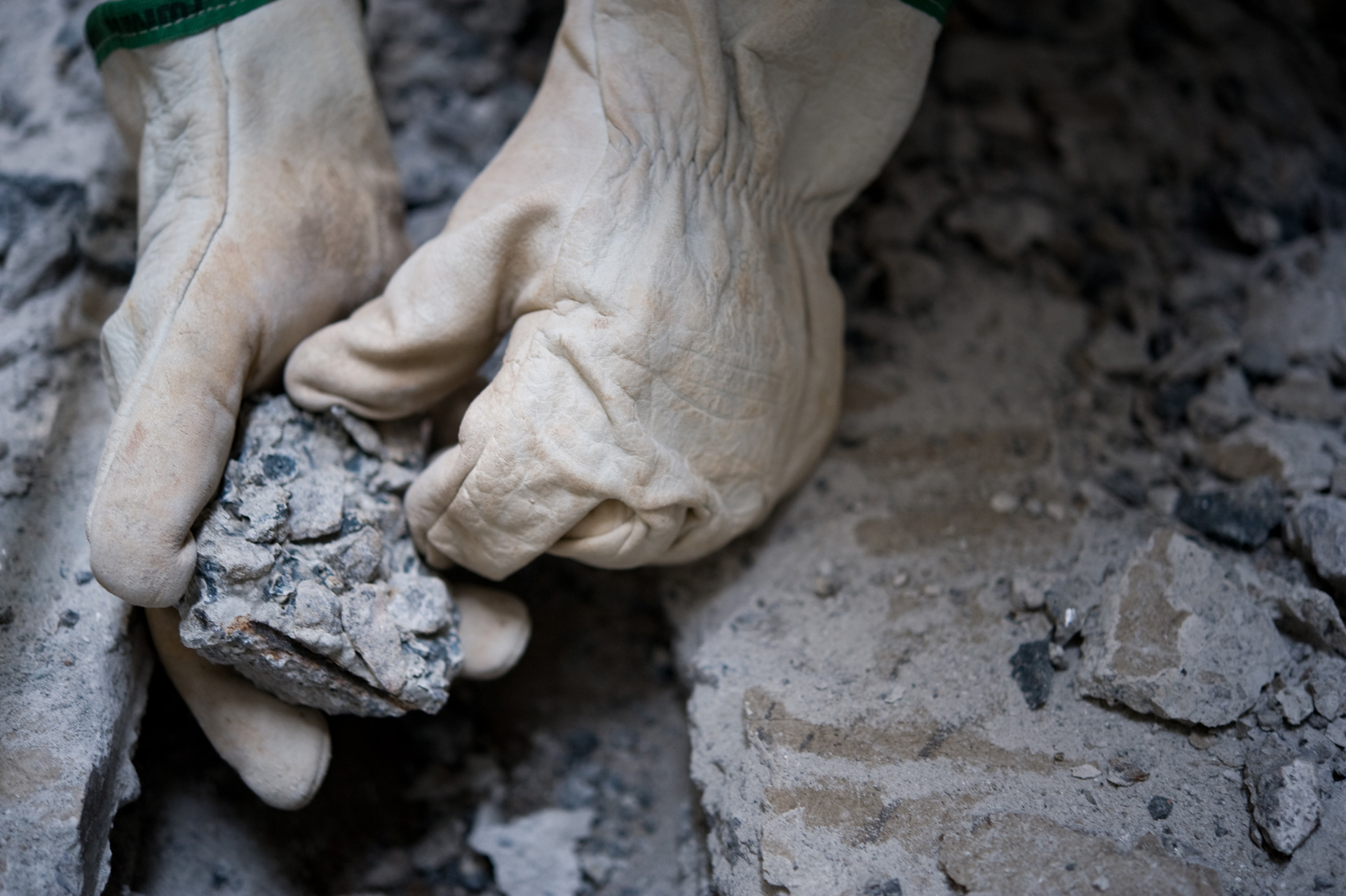
Palimpsesto Concreto
técnica mixta
200 x 230 x 172 cm
2012
Na ação realizada na Galeria LEME em 16 de dezembro de 2011, o espaço vazio localizado na Rua Agostinho Cantú N88 é tratado como história. O cubo de concreto armado não possui nada exposto em seu interior e a memória de todas as mostras realizadas ali ecoam melancolicamente a cada tremor do bate-estacas da construção ao lado - motivo maior da forçosa mudança daquele local.
Nesse espaço frio e duro, a realidade é [des]dobrada em duas, coexistindo simultaneamente passado e presente como num “erro de cálculo” do arquiteto, uma paralaxe espacial e temporal.
Em um processo de transição de um local a outro, muitas são as semelhanças entre o trabalho do artista e do arqueólogo. Coletar, classificar e reordenar o mundo de acordo com novos padrões é tarefa de ambos, assim como a imersão e o entendimento da cultura pretérita e todos os seus símbolos e signos.
A Galeria a ser destruída tornou-se minha Caverna de Lascaux, onde retiro as camadas “históricas” plasmadas em seu chão, como um palimpsesto do sistema da arte e as analiso tão “cientificamente” quanto faz um arqueólogo. Existe nessa ação ainda um embate subliminar que se dá através da ação do artista contra a aura do autor/arquiteto e também a presença acentuada do comércio da arte - personificados na dureza do concreto das paredes e do chão da galeria. Travo uma verdadeira luta contra o lugar, escavando o duro solo com um martelo hidráulico na esperança de recolher vestígios de formas de arte uma vez ali expostas.
O resultado de tal ação é mostrado em um segundo momento no novo espaço - simulacro do anterior e deslocado alguns poucos metros de sua planta original - a escavação surge na galeria recém contruída dando continuidade ao ciclo histórico/artístico que acontece e que continuará acontecendo no lugar.
Mais do que uma ação/documentação sobre um espaço tão afetivo e familiar a mim como era a galeria na rua Agostinho Cantú, essa obra é uma declaração de respeito e crença no poder atemporal da Arte e nas transformações pelas quais passamos ao sermos submetidos a ela.